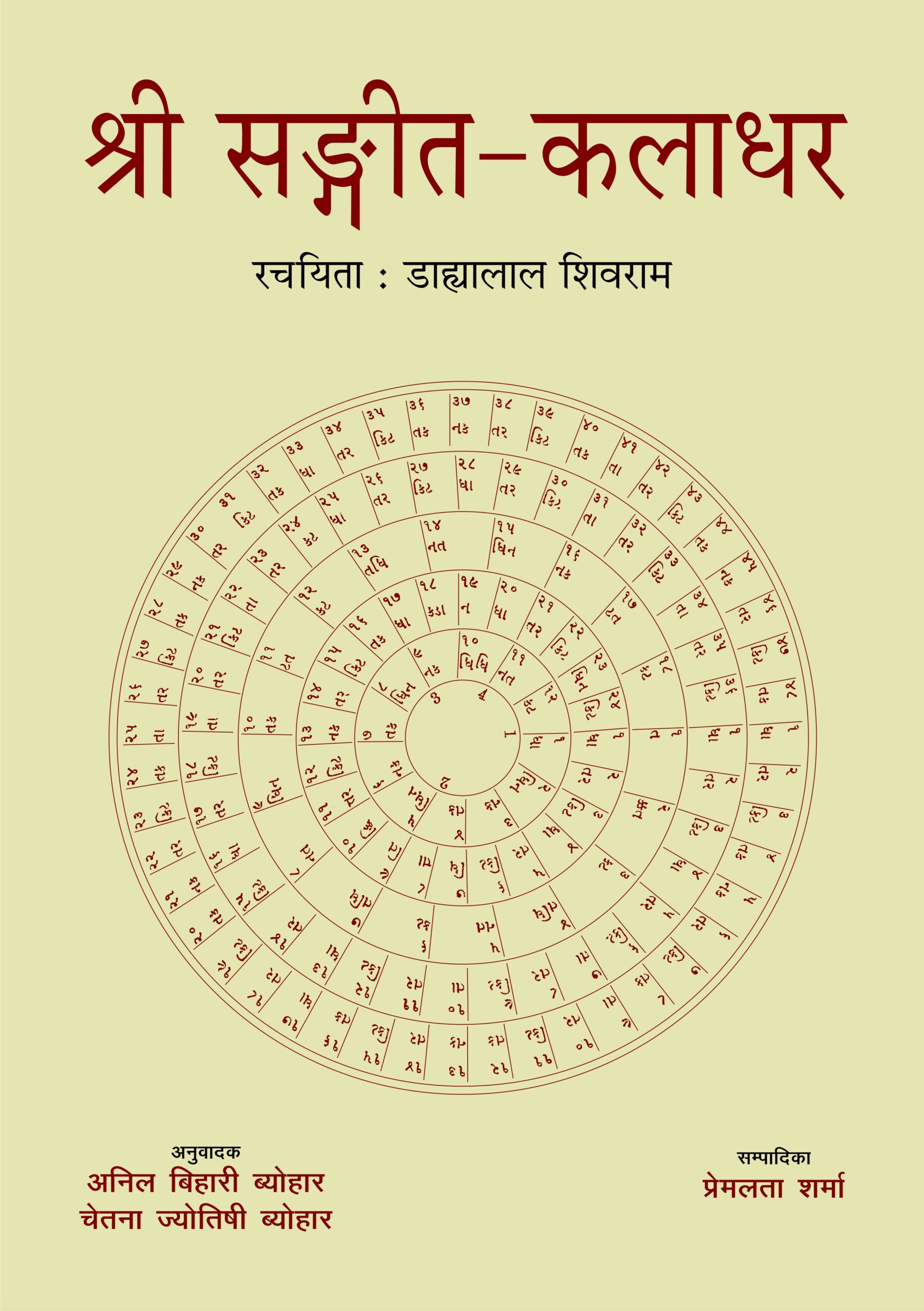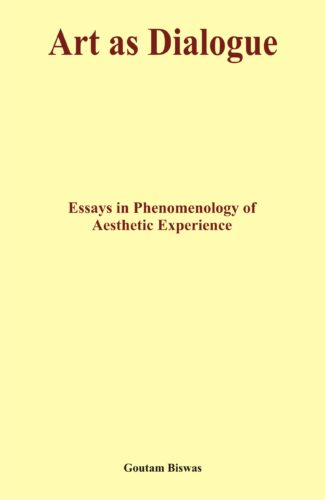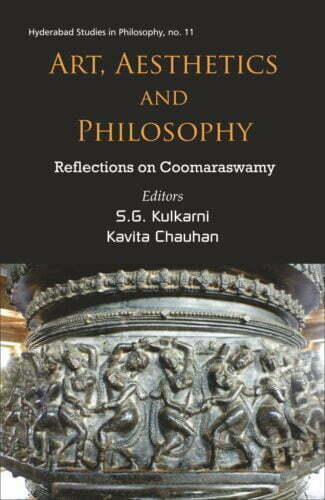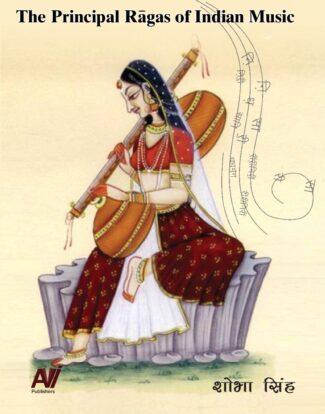

Shri Sangita Kaladha...
Shri Sangita Kaladhara; by Dahyalala Shivarama; Hindi translation by Bihari Byohara and Chetna Jyotisha Byohara
by: Dahyalal Shivram , Anil Bihari Byohar , Chetana Jyotish Byohar , Prem Lata SharmaThis book was written by an unusual royal court poet of Bhavanagar (Gujarat) between 1885 and 1900. It benefits those readers, music lovers and singers who are interested in having knowledge of our ancient musicology. This book tries to project the style and suras prevalent from ancient to the modern times, and is a very useful guide for the music critics.
₹1,250.00 Original price was: ₹1,250.00.₹1,125.00Current price is: ₹1,125.00.
ISBN: 9788124603635
Year Of Publication: 2006
Edition: 1st
Pages : xlii, 546
Language : Hindi
Binding : Hardcover
Publisher: D.K. Printworld Pvt. Ltd.
Size: 29 cm.
Weight: 2300
This book was written by an unusual royal court poet of Bhavanagar (Gujarat) between 1885 and 1900. It benefits those readers, music lovers and singers who are interested in having knowledge of our ancient musicology. This book tries to project the style and suras prevalent from ancient to the modern times, and is a very useful guide for the music critics.
- Sale!Art as Dialogue by: Goutam Biswas
₹200.00Original price was: ₹200.00.₹180.00Current price is: ₹180.00.This refreshingly original work presents a totally new methodology for understanding the concept of aesthetic experience. The traditional model of explaining this experience through the dichotomy of the creator, beholder or critic on the one hand, and the object of art, on the other is challenged and replaced by the new model which the author prefers to call dialogue a dialogue between the subject and the object, I and Thou. The epistemological and ontological methods which rely heavily on the bifurcation of the subject and the object fails to reveal the true nature of the experiential whole that forms the real core of aesthetic experience. The authors innovative methodology holds the promise for transcending the bounds of all such limitations and distinctions. Most significantly, the conception of art as dialogue is stipulated to work not as a means, but as an end, i.e., the consummation of art-experience itself. In this scheme the principle of relationship, not the substance, constitutes the reality of aesthetic experience and the model allows one to encompass within its scope the pre-linguistic, linguistic and trans-linguistic phases of the relationship between the man and the art. Dr. Biswas long training in Phenomenology and Existentialism makes his study of Martin Buber and Michael Polanyi lucid and stimulating. And his immense interest in Modern Indian Philosophy results in a superb analysis of Tagores and Radhakrishnans aesthetic approach
- Sale!Buddhism as/in Performance by: David E.R. George
₹500.00Original price was: ₹500.00.₹450.00Current price is: ₹450.00.Professor George has ventured into a comparatively unchartered area seeking, as he does, to explore the art and concept of performance in Buddhism more specially in the context of Buddhist meditation and theatre. Spelling out the epistemology of performance in all its different connotations and definitional nuances, his study opens out an astonishingly vast panorama of the Buddhist theatrical practices in Sri Lanka, China, Japan, Nepal, Tibet . . . and goes on to demonstrate how, within this panorama, three kinds of theatrical practice can be identified, each corresponding to one of the three paths open to a Buddhist: the karma path, the Bodhisattva option, and enlightenment, and each representative of one of the three main cultures of Buddhism the Hinayana, Mahayana, Vajrayana. Supported by extensive endnotes and bibliographic references, Dr. Georges book also carries a range of case studies of the art of performance in Buddhism, with definitive examples, among others, of the Sri Lankan Kandy dance and Karma drama, Tibetan Chams and Chod, and Japanese Noh. Buddhism as/in Performance is a commendable piece of painstaking research, presented in a jargonless, compellingly readable style. It is certainly a pre-eminent contribution to drama studies, particularly of Buddhist theatrical practices.
- Sale!Art, Aesthetics and Philosophy by: S.G. Kulkarni, Kavita Chauhan,
₹420.00Original price was: ₹420.00.₹378.00Current price is: ₹378.00.The savants of the twentieth century have excavated the past to discerningly reveal the present. Swami Vivekananda, Rabindranath Tagore, Sri Aurobindo, Mahatma Gandhi and Ananda Coomaraswamy, among others, interpreted Indian aesthetics, civilization, culture and philosophy unearthing the Indian wisdom against the wrong interpretations and teachings of the Western colonial scholars. This volume, a collection of papers presented at a national seminar on the Philosophy of Ananda Coomaraswamy held in February 2011 at the University of Hyderabad, approaches Coomaraswamys philosophy on Indian aesthetics, life and religion from different perspectives.
The volume brings forth different facets of Coomaraswamy: as a catalyst in spiritualizing Indian arts; his views on modernism and anti-modernism; his efforts in aestheticizing India; his polemics of decolonization through art criticism; his aesthetical philosophy; his perception and understanding on art, culture and Indianness; his metaphysics; and his philosophical approach to visuals and materials from the lens of an art historian. It sketches Coomaraswamys multifaceted persona, enunciating that the crux of modern Indian philosophy is one of vision, rather than building theories.
In a nutshell this book presents the varied reflections on Coomaraswamys personality as a philosopher, art historian, art curator and his strong positioning against the colonial teachings of Western art historians and philosophers on Indias art, civilization and culture, projecting an image of Indianness in every sphere. - Sale!Rasa in Aesthetics by: Priyadarshi Patnaik
₹990.00Original price was: ₹990.00.₹891.00Current price is: ₹891.00.The Indian tradition of criticism is over two millennia old. And its rasa theory has, from the beginning, essentially influenced authors, connoisseurs and art critics alike. First expounded sometime between the 1st century bc and the fourth century AD in the eminent aesthetician, Bharata’s Natya Shastra, rasa theory deals with the ‘emotive content’ of a work of art — how it is depicted, inferred and transmitted. Dr. Patnaik’s book is a unique effort that demonstrates, with diverse examples, the universality of this ancient theory and its applicability to modern Western classics. Elucidating afresh the concept of rasa and all its nine primary kinds largely on the basis of Natya Shastra of Bharata and the commentaries of the tenth-century aesthetician, Abhinavagupta, the book investigates the validity of rasa theory as an aesthetic, more specifically, a literary theory, and how its canons are applicable to modern Western literature as well as Chinese love lyrics and Japanese haiku poems. Dr. Patnaik’s transcultural exploration, thus, covers all major genres of literature — poetry, drama and fiction; and also major writers — Lawrence, Mayakovsky, Kafka, Camus, Conrad, Hemingway, Faulkner, Marquez, Eliot, Hesse, O’Neill, Ionesco, Beckett, Lorca, Neruda and several others. In emphasizing the universal validity of the rasa theory, the author considers certain modern problems relevant to text, meaning and readers’/audiences’ response as well. Very few are the examples of applied rasa theory even in Sanskrit and other Indian literatures, leave alone its application to Western creative writing. This book, with its bold framework and lucid style, should, therefore, fascinate the scholars of Indology, Indian aesthetics and, above all, comparative literary criticism.
- Sale!The Principal Ragas of Indian Music (?????? ????? ??? ????? ???) by: Shobha Singh
₹850.00Original price was: ₹850.00.₹765.00Current price is: ₹765.00.Music has been the subject of study in India since Vedic period. Various ragas are the life of Indian music. ‘Thaat’ is the method of dividing ragas in Hindustani classical music. The main raga of each ‘Thaat’ is called the ‘Ashraya’ raga and other ragas are ‘Ashrita’ ragas. Extracting from the texts written by Pt. Vishnu Narayana Bhatkhande, Pt. Narayana Moreshwar Khare and other well-known musicians, this book is an attempt to make the readers aware of the ‘Ashraya’ ragas. Through this book, Shobha Singh has very clearly presented the concept of Ashraya’ raga and its significance. The language of this book is simple and easy to comprehend. भारत में संगीत वैदिक काल से ही अध्ययन का विषय रहा है। विभिन्न राग भारतीय संगीत की जान हैं। थाट (अथवा ठाट) हिंदुस्तानी शास्त्रीय संगीत में रागों के विभाजन की पद्धति है। प्रत्येक थाट के प्रमुख राग को आश्रय राग एवं अन्य रागों को आश्रित राग कहा जाता है। पं. विष्णु नारायण भातखण्डे, पं. नारायण मोरेश्वर खरे एवं अन्य जाने-माने संगीतज्ञों द्वारा लिखित ग्रंथों को निचोड़ते हुए, यह पुस्तक पाठकों को आश्रय रागों के बारे में अवगत कराने का प्रयास है। इस पुस्तक के माध्यम से शोभा सिंह ने आश्रय राग की अवधारणा और उसे महत्व को बहुत ही स्पष्ट रूप से प्रस्तुत किया है। इस पुस्तक की भाषा सरल एवं पठनीय है।






